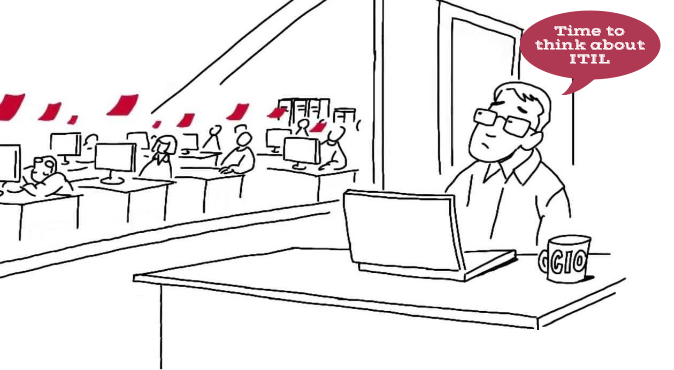Why CIOs are still inclined to ITIL to align IT with Business?

Summary:
DCIM tools or you can say software and hardware management has become trending hot topics in the market of data centers. And simultaneously are these infrastructure management tools compliant with standards set by ITIL is also increasingly a major part of the discussion point among many CIOs of the industry.
Does eMagic DCIM complies with ITIL standards? The answer is yes. But you might think why CIOs are giving so much weightage to this certification. Let’s find the answers together!
Presentation:
The ambition of an aligned information system within a business depends on the ability of IT to deliver new services based on a reliable and organized approach. The latter cannot exist in a sustainable manner, only through mastery of production implementation phases, control and validation. The objective is quite straightforward, understand better and concretely transform processes that support the standard business processes.
About ITIL
ITIL (in-short: information library of the IT) has become in recent years a worldwide reference about best practices dedicated to IT industry.
ITIL is a framework of references from sectors bringing together public and private, in a set of guidelines, best practices in IT service management. The goal of ITIL is to provide IT departments with tools and documents, enabling them to improve the quality of their services. The previous ITIL Version 2 (V2) has undergone transformation and became a major ITIL V3.
ITIL Version 3 (V3) is an important development. This makeover has transformed the guide; it can’t only provide excellent service, but also to be the most innovative and the best in its class. At the same time, the interface between the old and the new version is transparent, so that users do not have to reinvent the wheel for passing the V3. V3 allows users to build on the successes of V2, while managing IT services.
ITIL V3 is a first major update since 2007 – it addresses a wide range of issues raised in the paper change control and resolve errors and inconsistencies in the texts and diagrams through the entire series. For information, this version is an update and not a new version.
The ITIL V3 Framework is categorized into 5
1. Service Strategy:
The main objective is to specify that each stage of the service provides a comprehensive view of the strategy of services and its activities.
2. Service Design
The objective is to provide guidance for the management level of service design, including all related activities of the service.
3. Service Operation
It describes the management level, operating services, principles of the service operation, operation processes and related activities.
4. Service Transition
Focus upon the management-oriented view of the transition services, providing guidance and process activities for transitioning services into the business environment.
5. Continual Service Improvement
Introduce a complete view of the continuous improvement of services and activities to align and realign IT services continuously to changing business needs by identifying and implementing improvements to IT services that support business processes.
Benefits of ITIL Framework
ITIL provides a systematic and professional approach to the management of the provision of services. The undeniable success of ITIL with businesses and government agencies can be explained by several reasons:
* Cost reduction.
* Improved IT services through the use of testing and proven best practices.
* Users’ satisfaction (staff and customers).
* Standards and Guides.
* Continuous improvement of quality and productivity.
* Better use of skills and experience.
* Improved delivery of third party services through the specification of ITIL and ISO 20000 as the standard for providing services in procurement services.
- Why is Microsoft Turning Its Focus on Linux? - March 29, 2016
- Migrating Enterprise Data to the Cloud – A Checklist - November 30, 2015
- Why is your private cloud beginning to fail? - October 20, 2015

Wonderful, helpful article I liked Thread